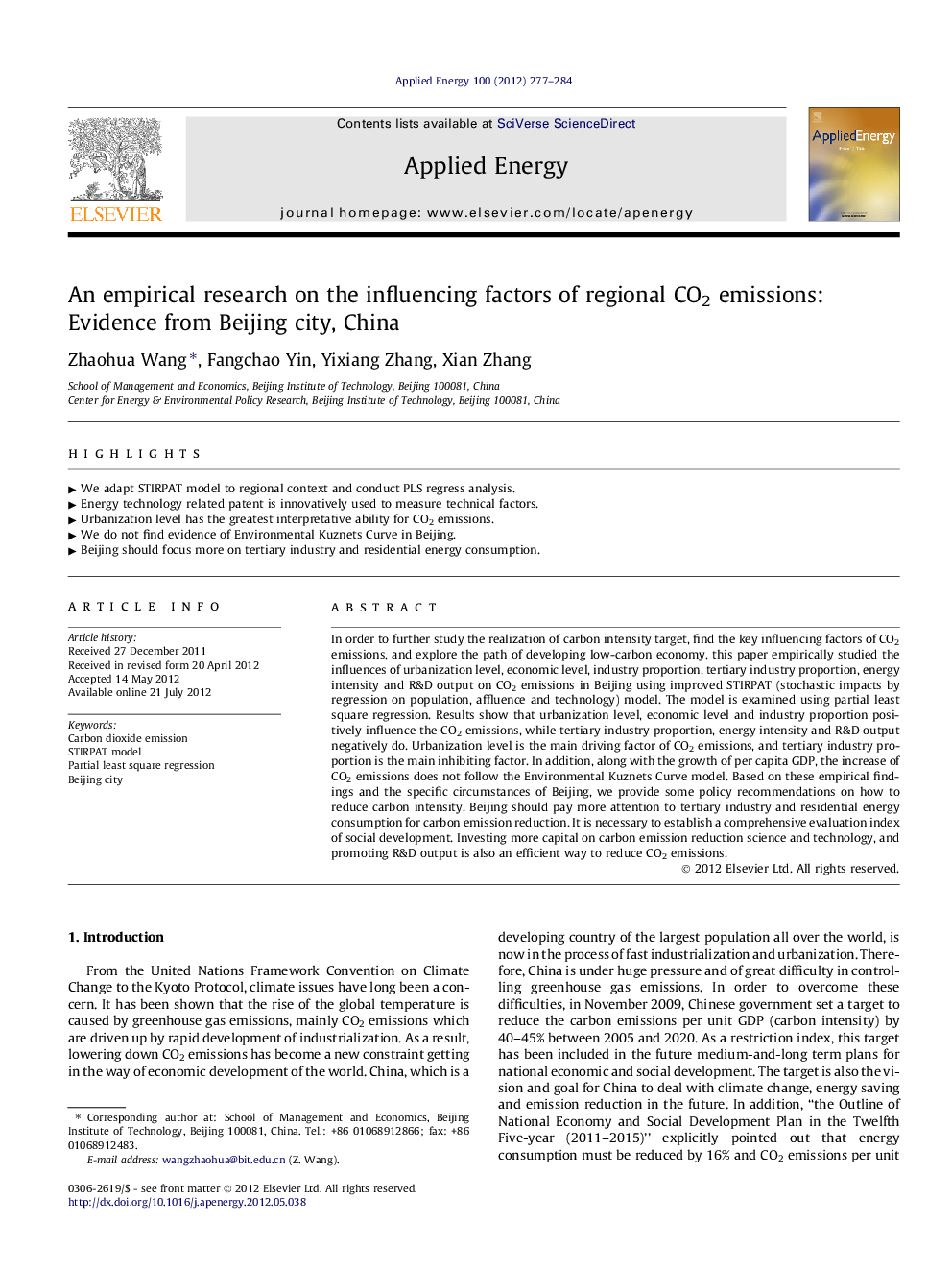| Article ID | Journal | Published Year | Pages | File Type |
|---|---|---|---|---|
| 243175 | Applied Energy | 2012 | 8 Pages |
In order to further study the realization of carbon intensity target, find the key influencing factors of CO2 emissions, and explore the path of developing low-carbon economy, this paper empirically studied the influences of urbanization level, economic level, industry proportion, tertiary industry proportion, energy intensity and R&D output on CO2 emissions in Beijing using improved STIRPAT (stochastic impacts by regression on population, affluence and technology) model. The model is examined using partial least square regression. Results show that urbanization level, economic level and industry proportion positively influence the CO2 emissions, while tertiary industry proportion, energy intensity and R&D output negatively do. Urbanization level is the main driving factor of CO2 emissions, and tertiary industry proportion is the main inhibiting factor. In addition, along with the growth of per capita GDP, the increase of CO2 emissions does not follow the Environmental Kuznets Curve model. Based on these empirical findings and the specific circumstances of Beijing, we provide some policy recommendations on how to reduce carbon intensity. Beijing should pay more attention to tertiary industry and residential energy consumption for carbon emission reduction. It is necessary to establish a comprehensive evaluation index of social development. Investing more capital on carbon emission reduction science and technology, and promoting R&D output is also an efficient way to reduce CO2 emissions.
► We adapt STIRPAT model to regional context and conduct PLS regress analysis. ► Energy technology related patent is innovatively used to measure technical factors. ► Urbanization level has the greatest interpretative ability for CO2 emissions. ► We do not find evidence of Environmental Kuznets Curve in Beijing. ► Beijing should focus more on tertiary industry and residential energy consumption.
